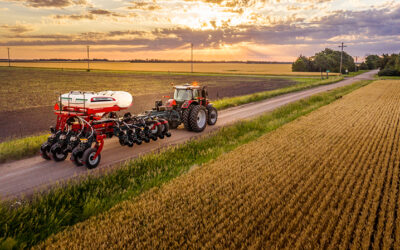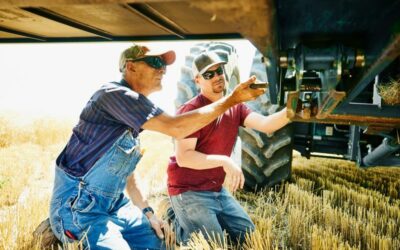1. Perform a Pre-Operation Safety Check
Before you start your combine, it’s essential to perform a thorough safety inspection. This practice helps prevent accidents and equipment issues during operation.
- Inspect Fluids, Tires, and Belts: Check fluid levels, tire pressure, and inspect belts for any signs of wear or damage. Low fluids or damaged belts can lead to unexpected breakdowns or accidents.
- Test Lights and Signals: Make sure that all lights, indicators, and signals are functioning correctly. Good visibility is critical, especially if you’re working late or transporting equipment on public roads.
- Clear the Area: Before starting, check your surroundings for obstacles, bystanders, or pets. Ensuring a clear area reduces the risk of accidents and keeps everyone safe on-site.
2. Stay Alert to Fire Hazards
Combines are at higher risk for fires due to the dry material they handle and the heat generated by the machinery. Being aware of fire hazards is key to preventing incidents in the field.
- Clean Out Crop Residue Regularly: Dust, chaff, and other crop residues can accumulate around the engine and exhaust, increasing the risk of fire. Take breaks to clear these areas throughout the day, especially during dry conditions.
- Keep a Fire Extinguisher on Hand: Equip your combine with an easily accessible fire extinguisher. Make sure it’s properly maintained and that you and your team know how to use it in case of an emergency.
- Inspect Electrical Systems: Faulty wiring can create sparks. Inspect all wiring and connections before starting each day to ensure they’re secure and free from wear.
3. Use Safe Mounting and Dismounting Practices
Many injuries happen when entering or exiting equipment. Practicing safe mounting and dismounting can prevent slips, falls, and other common accidents.
- Maintain Three Points of Contact: Always have three points of contact (two hands and one foot, or two feet and one hand) when climbing on or off the combine. This provides stability and prevents falls.
- Never Jump from the Equipment: Jumping can lead to twisted ankles, sprains, or more severe injuries. Always step down carefully using designated handholds and steps.
- Park on Level Ground: Whenever possible, park your combine on level ground to prevent unexpected movement and to make mounting and dismounting safer.
4. Prioritize Safe Operations in the Cab
Once inside the cab, maintaining focus and using the equipment correctly are essential for safe operation.
- Stay Focused and Avoid Distractions: Long hours in the field can lead to fatigue, but it’s important to stay focused and avoid using mobile devices or other distractions.
- Adjust Seat, Mirrors, and Controls: Make sure your seat, mirrors, and controls are adjusted for optimal visibility and comfort. At Ziegler, we believe you should Start with Safety by creating a comfortable and secure workspace.
- Use Caution When Unloading: Be mindful of your surroundings and use hand signals or radio communication with other team members during unloading to avoid accidents.
Why Choose Ziegler Ag for Combine Safety and Maintenance?
At Ziegler Ag, our commitment to safety goes beyond equipment—we’re here to support you with the resources, parts, and expert service that help keep your operation safe and efficient. With high-quality equipment inspections and a knowledgeable team ready to assist, we’re dedicated to helping you Start with Safety every day in the field.
For More Safety Resources and Equipment Support, Contact Ziegler Ag:
- Explore Our Services: Ziegler Ag Services
- Talk to a Ziegler Safety Specialist: Call 800-352-2812 for expert guidance.
- Visit Your Nearest Ziegler Location: Ziegler Locations
With Ziegler Ag as your partner, you’ll have the knowledge, support, and equipment you need to operate safely, season after season. Remember to Start with Safety and make every harvest a safe one.






